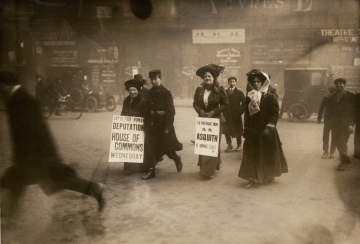Parliament and the Suffrage Campaign
The full resource is FREE to all registered users of the website
If you are not already registered you can sign up for FREE website access to download the full resource.

In this podcast Dr Mari Takayanagi, Senior Archivist at the UK Parliamentary Archives, looks at parliament and the suffrage campaign, from the first women's suffrage petition in 1866 through to the end of the First World War.
The podcast begins by looking at what we we mean by petitioning parliament, and at the events leading up to the 1866 Women’s Suffrage Petition and why this was such a remarkable event. It goes on to take a closer look at some of the individual women who signed this first petition including Barbara Bodichon, Emily Davis and Elizabeth Garrett. Dr Takayangi explains why the parliament building was such an important symbol for disenfranchised women, and shares some of the police reports of suffragette 'antics' from the Parliamentary Archives. The podcast finishes by looking at the effect of the outbreak of World War 1 in 1914 on women's interactions with parliament.
1. What do we mean by petitioning parliament, and what were the events surrounding the 1866 petition?
2. Who were the women that signed the 1866 petition, and were there other women’s suffrage petitions?
3. How important was the parliament building as a political symbol for disenfranchised women?
4. What were some of the suffragette ‘antics’ that took place in and around parliament?
5. How did women’s interactions with parliament change during and after the First World War?
